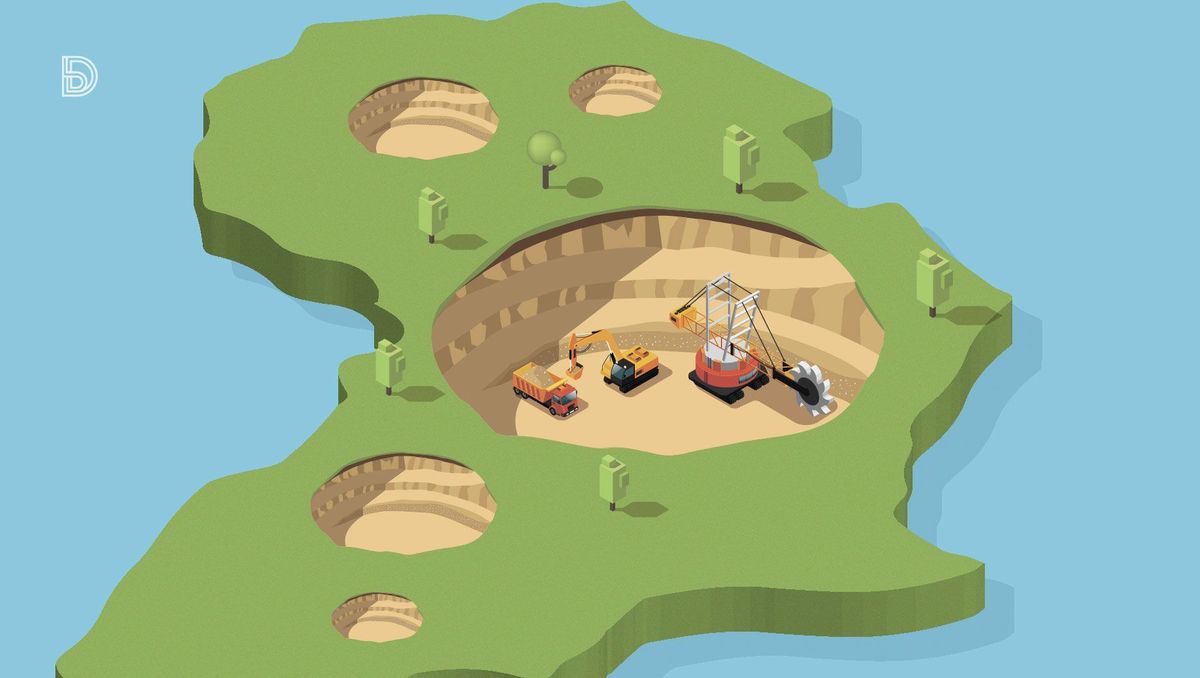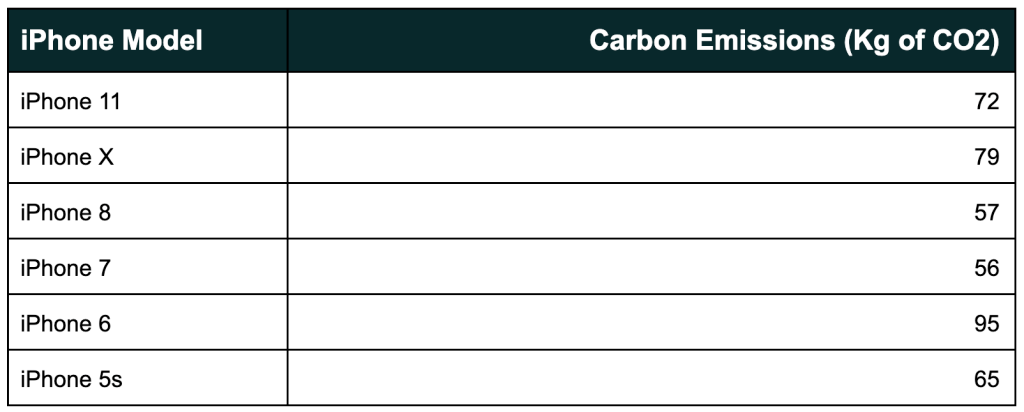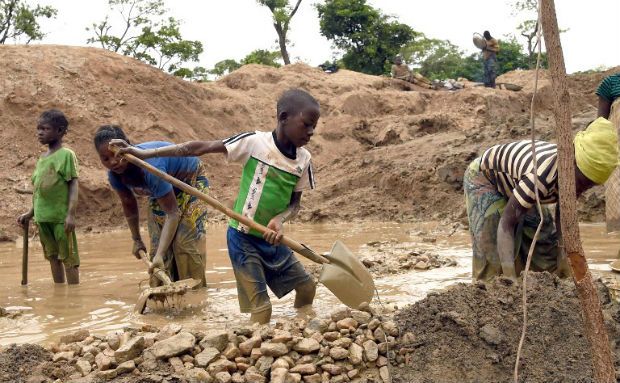The environmental cost of big tech in Africa
Big tech companies are coming under increasing scrutiny for the harmful effects of their activities on the environment. Africa is no exception to this. What are the harmful effects of big tech to the environment in Africa?

Whether during the research, production or assembly stage, tech giants expend a lot of resources into making refined products for their billions of customers worldwide.
However, there is increasing concern about the negative impacts of big tech activity to the environment, and Africa is no exception.
Over the weekend, news spread of another environmental disaster when a leaked gas pipeline resulted in an inferno in the gulf of Mexico. This incident has reignited the debate around climate change and the environmental impacts of industrial activity on the biosphere and natural environment.
There is hardly any day that passes by without major headlines about climate issues and the damage being done to the earth by industrial activity. Global warming, plastic contamination in the ocean, oil spillage, are just some of the challenges we face due to the increasing carbon footprint.
Nowadays, traditional industries like oil exploration, mining, factories and shipping are not the only ones that are being blamed for this; there is also raising concern about the activities of certain tech giants.
The carbon footprint of big tech globally
The hyper growth nature of the tech industry means there is always a demand for mineral resources to create and power their products. For example, electric car maker Tesla uses cobalt, a mineral resource that is extremely important to build its lithium-ion batteries.
The electric car industry has become both the largest and potentially fastest growing end user of cobalt. The industry is projected to reach 233.9 million car units by 2027, at a CAGR of 21.7% during the forecast period of 2020 to 2027. The use of lithium-ion batteries in the electric vehicle market has become the most important growth driver for cobalt demand and will only increase as the industry grows.
The Congo has the largest cobalt deposits in the world, and news about the unethical practices and exploitative manner in which it is mined has led to calls for sanctions.
One computer, if left on for 24 hours a day will dump an estimated 1,500 pounds of CO2 into the atmosphere. For context, a tree absorbs between 3-15 pounds of CO2 each year. That means that 100-500 trees would be needed to offset the yearly emissions of one computer left on all the time. Computers are used by billions across and this accumulated number of greenhouse emissions pose a significant risk to the environment.
The smartphones we use everyday manufactured by tech giants like Google and Apple also have a significant carbon footprint. Generally, the carbon footprint of smartphones is broken into two main areas; the manufacturing of the phone and its usage/charging.
Using your phone each day has a bigger impact on the environment than just making it. For instance, there’s a lot of energy needed to run the data centres and infrastructure that let consumers make video calls, post selfies, and stream TV. A one minute mobile-to-mobile call produces 57g of CO2, sending a text message (SMS) produces 0.014g of CO2 and using 1GB of data uses 3 kg of CO2.

People do not tend to realize that the computing device that has become such an important part of our lives is a leading cause of global warming, especially large computer server farms.
E-commerce giant Amazon has one of the largest collection of data centers in the world, and that much computing power comes at the cost of the environment.Recent estimates state that the energy consumption of data centres is set to account for 3.2 percent of the total worldwide carbon emissions by 2025 and they could consume no less than a fifth of global electricity. By 2040, storing digital data is set to create 14 percent of the world’s emissions, around the same proportion as the US does today.
Uber too, has come under increasing scrutiny about its contribution to carbon emissions globally. A recent study by the Union of Concerned Scientists concludes that the ride hailing giant is increasing car travel, climate emissions and traffic congestion, according to a new US study. Ride-hailing trips now result in an estimated 69% more climate pollution, on average, than the trips they displace, it finds.
A solo ride-hailing trip, on average, emits nearly 50% more CO2 than one in a private vehicle, the researchers found. A pooled ride-hailing trip - one which multiple passengers share - emits nearly the same amount as a private car ride. Only 15% of all US ride-hailing trips are shared, according to the report.
Despite ride-hailing vehicles being newer and having greater fuel efficiency than the overall vehicle fleet, the significant time that their drivers spend driving without a passenger means that they increase emissions. For instance, ride-hailing drivers spend 42% of their service time either waiting for or driving towards a ‘pick up’.
As a result, the study found that ride-hailing also emits nearly 70% more than trips that passengers would have otherwise taken by public transport, cycling or walking.
There has also been a lot of scrutiny regarding bitcoin and its carbon footprint, especially bitcoin mining. Bitcoin mining uses about the same amount of energy annually as the Netherlands did in 2019, data from the University of Cambridge and the International Energy Agency shows.
In fact, Bitcoin production is estimated to generate between 22 and 22.9 million metric tons of carbon dioxide emissions a year, or between the levels produced by Jordan and Sri Lanka.
The activities of big tech in Africa
Big tech firms like Tesla, Apple, Dell and Google have come under increasing criticism relating to the environmental crisis around cobalt mining in Africa. Tesla and Apple use cobalt for the lithium-ion batteries that power their cars and devices, and the Congo has the largest lithium deposits in the world.
The soaring demand for cobalt is fulfilled by poor rural workers, including children, who labor in harsh and dangerous conditions. An estimated 100,000 cobalt miners in Congo use hand tools to dig hundreds of feet underground these remote mines, with little oversight and few safety measures, according to workers and government officials.
Deaths and injuries are common. And the mining activity exposes local communities to levels of toxic metals that appear to be linked to ailments that include breathing problems and birth defects, health officials say.
The Enough Project, a Washington-based advocacy organization, released a report in October drawing attention to corruption, transparency issues and human rights abuses in Congo’s cobalt sector. The report highlights child labor and other human rights violations in the Congo mines.

Tech Corporations have long claimed to monitor their supply chains, so as to not allow any “dirty cobalt” be used during the manufacturing and assembly process.
The Washington Post, in a report, traced a cobalt pipeline through the supply chain and showed how cobalt mined in these harsh conditions ends up in popular consumer products like Apple. The report showed how it moved from small-scale Congolese mines to a single Chinese company; Congo DongFang International Mining, that for years has supplied some of the world’s largest battery makers. They, in turn, have produced the batteries found inside products such as Apple’s iPhones.
Apple, in response, acknowledged that this cobalt has made its way into its batteries. The tech giant said that an estimated 20 percent of the cobalt it uses comes from Huayou Cobalt and said the company plans to increase scrutiny of how all its cobalt is obtained. Apple is not the only company facing scrutiny.
Tesla has been coming under heavy fire for its use of cobalt sourced from Congolese mines for its batteries. The electric carmaker recently did little to quell the noise when it signed a new cobalt deal with Glencore, to deliver 6000 tons of cobalt a year. Glencore owns the largest mine for the mineral in the Congo, and it’s exactly where Tesla is going to get the commodity sourced from, to make lithium-ion batteries at its Gigafactories in Berlin and Shanghai.
Big Tech and Stakeholders Respond
One of the studies around the health risks posed to workers in these mines found that residents who live near mines or smelters in southern Congo had urinary concentrations of cobalt that were 43 times as high as that of a control group, lead levels five times as high, and cadmium and uranium levels four times as high. The levels were even higher in children.
Another study, published earlier this year, found elevated levels of metals in the mining region’s fish. Also, a study of soil samples around mine-heavy Lubumbashi concluded the area was “among the ten most polluted areas in the world.”
One study published by doctors in 2012 found preliminary evidence of an increased risk of a baby being born with a visible birth defect if the father worked in Congo’s mining industry.

In light of these developments, a lawsuit was filed in the U.S. District Court in Washington D.C. by the non-profit organization “International Rights Advocates”, on behalf of 13 anonymous plaintiffs from the Democratic Republic of Congo. Apple, Google parent company Alphabet, Microsoft, Dell and Tesla were named as co-defendants.
In the suit, the plaintiff claimed reliefs for “their complicity in the death and maiming of hundreds, if not thousands of African children who mine cobalt”. A Google spokesperson called child labor and endangerment "unacceptable" and said the company's supplier code of conduct "strictly prohibits" it”.
In response to increasing scrutiny, big tech companies have been trying to save face. Apple has announced its commitment to become 100% carbon neutral by 2030. This means that by 2030 all Apple products like phones and computers sold will have a net-zero climate impact.
Tesla has tried to defend its cobalt sourcing in a report on its site, though it did not quell concerns about political instability and the challenges of ethical sourcing in Africa.
Reducing the carbon footprint of data centres is very pivotal to a more sustainable planet. A recent IDC study projects that by 2025, worldwide data traffic will grow by 61 percent to 175 zettabytes, with roughly 75 percent of the population having at least one data interaction every 18 seconds. As global internet penetration rates continue to grow and connected technologies enter the mainstream, it’s clear that the number of data centres worldwide is going to keep on increasing.
With the proliferation of data centres and the need for building more sustainable solutions around data, some data industry experts believe building data centres in cold countries could help reduce emissions. Google tested this theory by opening a data centre in Hamina, Finland in 2009, and also announced it would invest a further €600 million to bring more sustainable data solutions to the world.
Recently, the Congolese government has increased its tax on Cobalt exports by 50% and is considering labeling the metal a strategic resource. This would increase the royalty for Cobalt from 2% to 10%, making it more expensive to use the product for big companies.
Balancing certain stakeholder interests is key to establishing common ground, protecting the livelihood of people and their well-being while ensuring sustainability. A group of NGOs recently cautioned against banning cobalt mining, stating that avoiding cobalt mining, stating that it could have serious consequences for people’s livelihoods.
In response to increasing scrutiny and potential risks to companies’ supply chains, cobalt-mining companies have positioned themselves as able to solve the problems associated with cobalt. Yet, this may prove to be insufficient. A holistic approach to solving this crisis has to involve every stakeholder; government, companies, actors in the supply chain, big tech companies and NGOs to protect the interest of the common man.







Comments ()